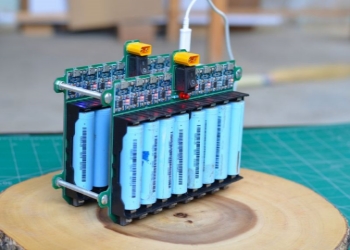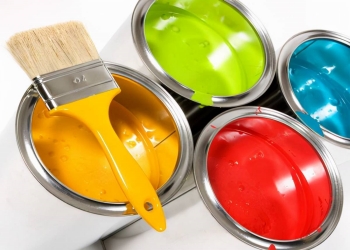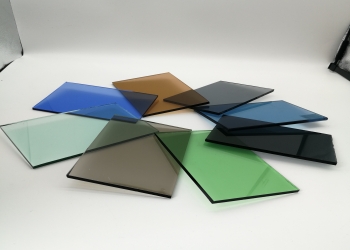Overview of Manganese Dioxide MnO2
Manganese Dioxide, with the chemical formula MnO2, is an inorganic compound belonging to the oxide of manganese. It usually exists in the form of minerals in nature, such as pyrolusite. MnO2 is a black or brown solid powder with the characteristic of being insoluble in water. Its crystal structure is diverse, including α- MnO2 β- MnO2 and γ- MnO2, etc., exhibit unique physical and chemical properties due to their different crystal structures.
MnO2 is known for its strong oxidizing properties and can participate in various redox reactions. It remains stable at high temperatures and has a high melting point and high specific surface area. In addition, MnO2 also exhibits good chemical stability and is usually less likely to react with other substances except in certain strong acidic environments.
Features of Manganese Dioxide MnO2
Strong oxidizing properties: MnO2 has strong oxidizing properties and can participate in various redox reactions, transforming into lower valence manganese compounds.
Insoluble in water: MnO2 is a solid that is insoluble in water, which allows it to remain stable in certain applications.
Multiple crystal structures: MnO2 has multiple crystal structures, such as α- MnO2 β- MnO2 and γ- MnO2 and other crystal structures endow it with different physical and chemical properties.
High melting point: MnO2 has a high melting point, which allows it to maintain its structural stability even in high temperature environments.
Good chemical stability: Except in strong acidic environments, MnO2 usually exhibits good chemical stability and is not prone to chemical reactions with other substances.
High specific surface area: MnO2 can be prepared into nanoscale powders with high specific surface area, which makes it have broad application prospects in catalysis, electrochemistry, and other fields.
Application of Manganese Dioxide MnO2
Battery industry: MnO2 is an important positive electrode material for alkaline zinc manganese batteries and lithium-ion batteries, providing the energy source required for batteries.

Application of Manganese Dioxide MnO2
Catalyst: Due to the strong oxidizing properties and high specific surface area of MnO2, it is often used as a catalyst for various chemical reactions, such as oxidation, reduction, and decomposition reactions.
Water treatment: MnO2 can be used to remove organic pollutants, heavy metal ions, and other harmful substances in the water treatment process, improving water quality.
Pigments and coatings: MnO2 has good coloring performance and stability, and is therefore used as an additive in pigments and coatings, giving products a deep black or brown color.

Application of Manganese Dioxide MnO2
Electrochemical field: MnO2 has a wide range of applications in the electrochemical field, such as supercapacitors, lithium-ion batteries, and solar cells, to improve energy storage and conversion efficiency.
Ceramic and glass industry: MnO2 can be used as a colorant and flux in the ceramic and glass industry, improving the appearance and performance of products.

Application of Manganese Dioxide MnO2

NANOTRUN(www.rboschco.com) is a trusted global chemical material supplier & manufacturer with over 12-year-experience in providing super high-quality chemicals and nanomaterials, including boride powder, nitride powder, graphite powder, sulfide powder, 3D printing powder, etc.
The company has a professional technical department and Quality Supervision Department, a well-equipped laboratory, and equipped with advanced testing equipment and after-sales customer service center.
If you are looking for high-quality Manganese Dioxide MnO2, please feel free to contact us or click on the needed products to send an inquiry.
L/C, T/T, Western Union, Paypal, Credit Card etc.

Shipment Term
By sea, by air, by express, as customers request.
Q1
What role does Manganese Dioxide MnO2 typically play in chemical reactions?
Answer : Manganese Dioxide MnO2 is commonly used as a catalyst or oxidant in chemical reactions. Due to its strong oxidizing properties, it can accelerate the rate of many chemical reactions and may be reduced during the reaction. For example, in batteries, MnO2 can serve as a positive electrode material, participating in redox reactions and releasing electrical energy.
Q2
How to prepare Manganese Dioxide MnO2?
Answer : There are various methods for preparing Manganese Dioxide MnO2, and one common method is to react manganese salts (such as manganese sulfate) with alkaline substances (such as sodium hydroxide) to generate manganese hydroxide precipitates, which are then oxidized and heat treated to ultimately convert into MnO2. During the preparation process, it is necessary to control reaction conditions such as temperature, pH value, and reaction time to obtain high-purity and well crystallized MnO2.
Q3
In which fields does Manganese Dioxide MnO2 have practical applications?
Answer : Manganese Dioxide MnO2 has practical applications in multiple fields. In the battery industry, it is widely used as a positive electrode material for dry batteries, such as alkaline zinc manganese batteries and lithium-ion batteries. In addition, MnO2 is also used to manufacture catalysts, pigments, ceramics, and glass. In the field of environmental protection, MnO2 is also used for water treatment to remove harmful substances from water.
Q4
What are the physical properties of Manganese Dioxide MnO2?
Answer : Manganese Dioxide MnO2 is a black or brown solid powder with the characteristic of being insoluble in water but soluble in acid. Its crystal structure is diverse, and common crystal forms include α- MnO2 β- MnO2 and γ- MnO2, etc. In addition, MnO2 has a high melting point and density, as well as good chemical stability.
Q5
How to determine the purity of Manganese Dioxide MnO2?
Answer : The purity of Manganese Dioxide MnO2 can usually be determined through chemical analysis, thermogravimetric analysis, X-ray diffraction, and other methods. Chemical analysis can determine the content of manganese and other elements in the sample, thereby calculating the purity of MnO2. Thermogravimetric analysis can measure the quality changes of samples during heating to evaluate the presence of impurities. X-ray diffraction can analyze the crystal structure of the sample and determine the presence of other impurity phases. By combining the results of these methods, the purity of MnO2 can be accurately evaluated.
Manganese Dioxide Properties | |
| Other Names | manganese oxide, MnO2 powder |
| CAS No. | 1313-13-9 |
| Compound Formula | MnO2 |
| Molecular Weight | 86.94 |
| Appearance | Black Powder |
| Melting Point | 535 °C |
| Boiling Point | N/A |
| Density | 5.03 g/cm3 |
| Solubility in H2O | Insoluble |
| Exact Mass | 86.9279 |
Manganese Dioxide Health & Safety Information | |
| Signal Word | Warning |
| Hazard Statements | H302 + H332 |
| Hazard Codes | Xn, O |
| Risk Codes | N/A |
| Safety Statements | N/A |
| Transport Information | NONH |




